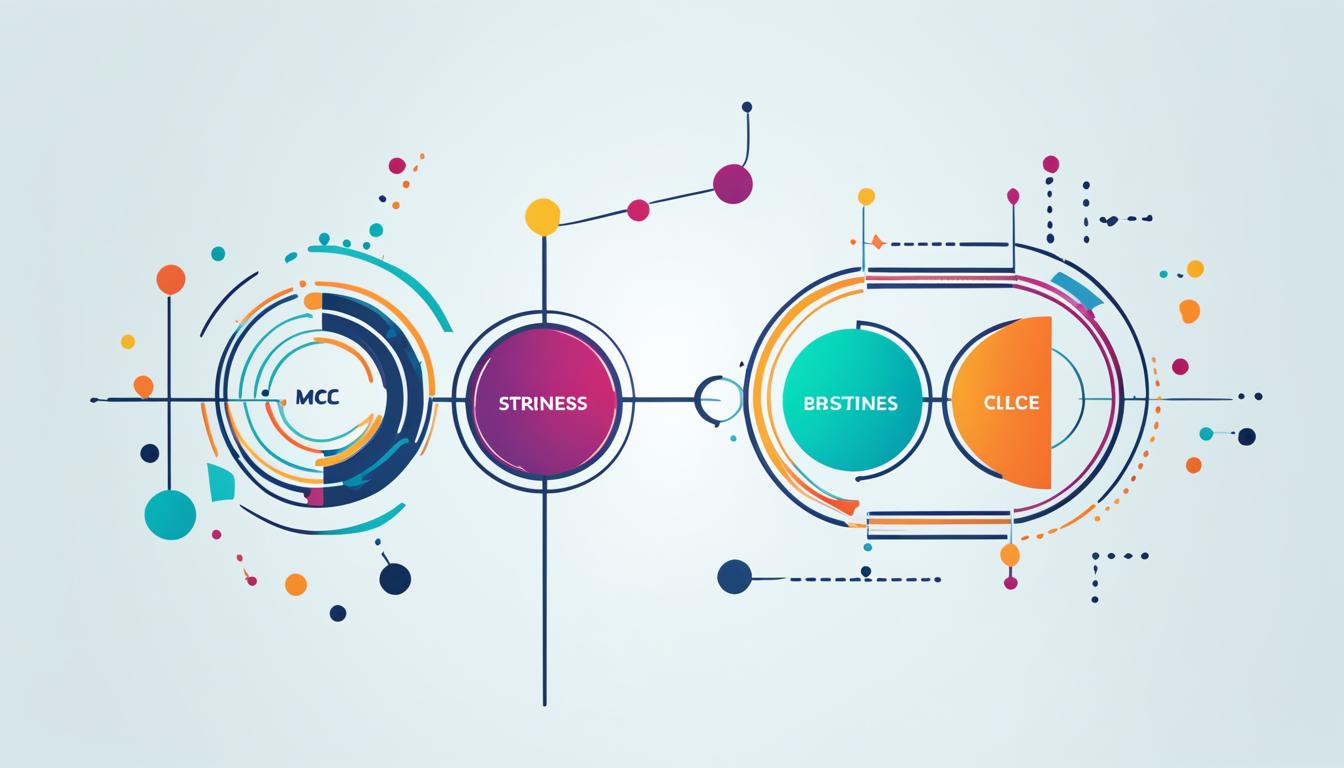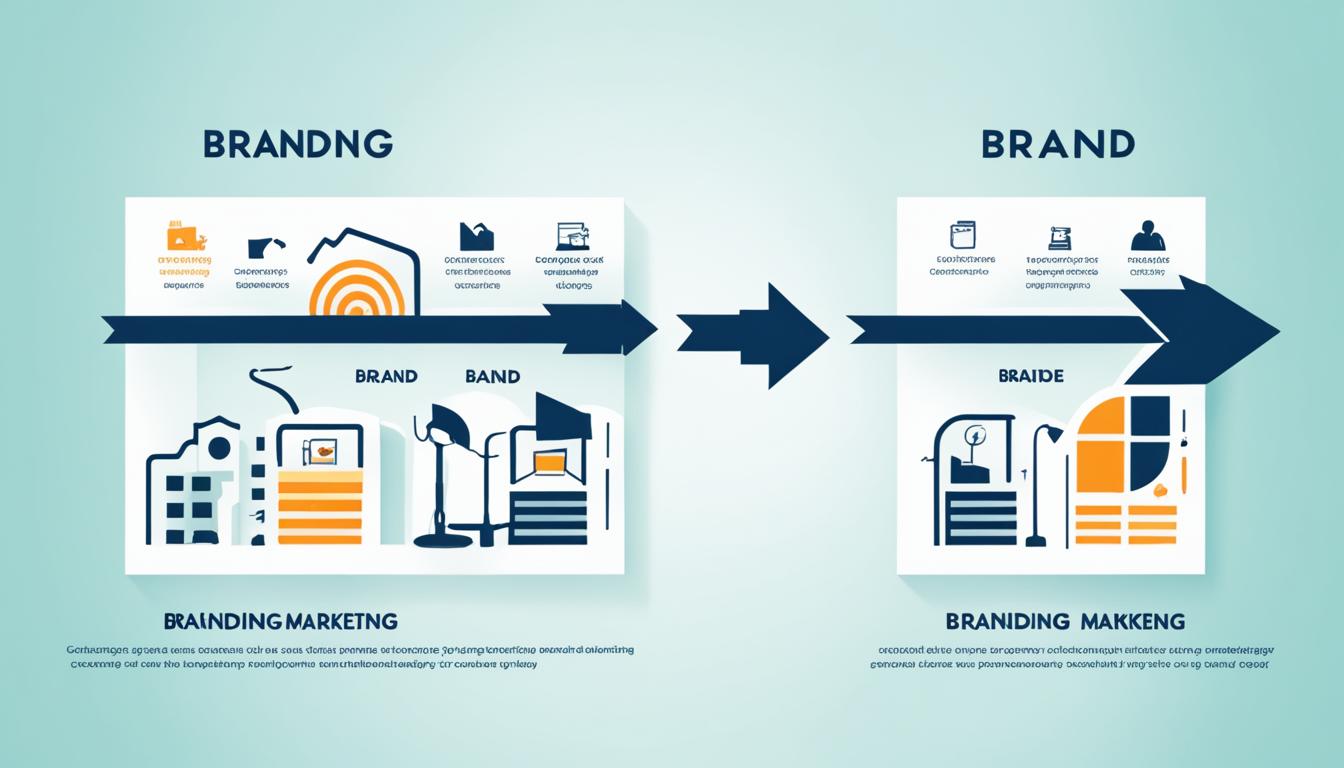Proactive and reactive marketing are two distinct strategies that businesses can use to promote their products or services. Proactive marketing involves conducting research and planning ahead to develop targeted campaigns and content. On the other hand, reactive marketing is based on current events and requires a quick response to engage with the audience. Both strategies have their pros and cons and should be used strategically to achieve effective marketing results.
Key Takeaways:
- Proactive marketing involves conducting research and planning ahead
- Reactive marketing requires quick response to current events
- Both strategies have their pros and cons
- Strategic use of proactive and reactive marketing is crucial for effective results
Understanding Proactive Marketing
Proactive marketing is a forward-thinking approach that focuses on anticipating and planning for future market changes and customer needs. It involves conducting thorough market research to gain insights into the target audience and develop objectives. Proactive marketing also includes product development, branding, and creating a strong online presence.
The benefits of proactive marketing are numerous. By implementing a proactive marketing strategy, businesses can stay ahead of the competition, anticipate and meet customer needs, and increase customer satisfaction and loyalty. This approach allows businesses to be proactive in addressing customer pain points and delivering tailored solutions.
One essential aspect of proactive marketing is conducting comprehensive market research. This enables businesses to understand their target audience, including their preferences, pain points, and purchasing behavior. By gaining these insights, businesses can develop effective marketing techniques that resonate with their target market.
Another key element of proactive marketing is product development. By continually innovating and improving their products or services, businesses can stay ahead of industry trends and customer demands. This helps establish the brand as a leader and sets it apart from competitors.
Proactive Marketing Techniques
Proactive marketing techniques encompass a range of strategies aimed at reaching and engaging the target audience effectively. These techniques include:
- Creating compelling content that provides value to the audience and addresses their pain points.
- Establishing a strong online presence through website optimization, search engine optimization (SEO), and social media marketing.
- Developing personalized marketing campaigns that cater to the specific needs and interests of the target audience.
- Implementing data-driven marketing strategies to analyze customer behavior and preferences.
- Building strategic partnerships and collaborations to expand the reach and influence of the brand.
By implementing these proactive marketing techniques, businesses can effectively engage with their target audience, build brand awareness, and drive customer loyalty.
| Benefits of Proactive Marketing | Proactive Marketing Techniques |
|---|---|
| Stay ahead of the competition | Creating compelling content |
| Anticipate and meet customer needs | Establishing a strong online presence |
| Increase customer satisfaction and loyalty | Developing personalized marketing campaigns |
| Implementing data-driven marketing strategies | |
| Building strategic partnerships and collaborations |
Implementing Proactive Marketing Strategies
Implementing proactive marketing strategies requires a systematic approach. By following key steps, businesses can effectively reach their target audience and drive success. Here are some proactive marketing tips to consider:
-
Conduct Market Research
Start by conducting comprehensive market research to gain insights into your target audience. Understand their needs, preferences, and behaviors to tailor your marketing efforts accordingly.
-
Create Buyer Personas
Develop buyer personas based on your market research. These fictional representations of your ideal customers help you better understand their motivations and preferences. Use this information to create targeted marketing campaigns that resonate with your audience.
-
Identify New Opportunities
Utilize your market research findings to identify new opportunities within your niche. Analyze market trends and explore untapped areas where your products or services can meet customer demands.
-
Develop a Product Development Plan
Create a comprehensive product development plan to ensure your offerings align with market needs. Continuously innovate and improve your products or services to stay ahead of the competition.
-
Build a Strong Brand
Establish a strong brand identity that resonates with your target audience. Consistently communicate your brand values, differentiate yourself from competitors, and build trust and loyalty among your customers.
-
Create a Content Marketing Strategy
Develop a content marketing strategy that aligns with your target audience’s interests and needs. Create valuable and engaging content that educates, entertains, and informs your customers, positioning your brand as a thought leader in your industry.
-
Monitor the Competition
Stay vigilant and keep a close eye on your competitors. Analyze their strategies, offerings, and customer interactions to identify areas where you can improve and differentiate yourself.
-
Leverage Technology
Embrace technology and utilize the available marketing tools and platforms to streamline your proactive marketing efforts. Leverage automation, analytics, and customer relationship management systems to enhance efficiency and effectiveness.
-
Create a Measurement Plan
Establish key performance indicators (KPIs) and metrics to measure the success of your proactive marketing strategies. Regularly track and analyze the data to assess the impact of your efforts and make data-driven decisions for continuous improvement.
By implementing these proactive marketing tips, businesses can stay ahead of the curve, effectively reach their target audience, and drive meaningful business results.
| Proactive Marketing Tips | Description |
|---|---|
| Conduct Market Research | Gain insights into your target audience’s needs, preferences, and behaviors to tailor marketing efforts. |
| Create Buyer Personas | Develop fictional representations of your ideal customers to better understand their motivations and preferences. |
| Identify New Opportunities | Analyze market trends and explore untapped areas where your products or services can meet customer demands. |
| Develop a Product Development Plan | Create a comprehensive plan to ensure your offerings align with market needs and continuously innovate. |
| Build a Strong Brand | Establish a brand identity that resonates with your target audience and builds trust and loyalty. |
| Create a Content Marketing Strategy | Develop valuable and engaging content that educates, entertains, and positions your brand as a thought leader. |
| Monitor the Competition | Keep an eye on competitors, analyze their strategies, and identify areas for improvement and differentiation. |
| Leverage Technology | Utilize marketing tools and platforms to streamline your proactive marketing efforts. |
| Create a Measurement Plan | Establish KPIs and metrics to measure the success of your proactive marketing strategies. |
Understanding Reactive Marketing
Reactive marketing is a response-based approach that focuses on reacting to current market conditions, customer needs, and competitor actions. It involves making quick decisions and responding to changes in the market. Reactive marketing strategies include promotions, price adjustments, and creative advertising campaigns. The goal of reactive marketing is to capture customers’ attention and stay competitive in the market.
Reactive marketing tactics are designed to align with the current trends and demands of the market. By reacting swiftly to market changes, businesses can effectively engage their target audience and drive sales. Some examples of reactive marketing tactics include:
- Real-time social media engagement: Taking advantage of trending topics and conversations to actively engage with customers and gain brand visibility.
- Newsjacking: Leveraging breaking news or current events to create relevant and timely marketing content that resonates with the audience.
- Contests and giveaways: Offering promotional incentives to attract and engage customers, creating a sense of urgency and excitement.
- Influencer partnerships: Collaborating with influential individuals or organizations to amplify brand exposure and reach a wider audience.
These reactive marketing tactics can help businesses stay agile and responsive in a rapidly changing market environment. By leveraging the power of quick decision-making and timely responses, businesses can effectively capture customers’ attention and maintain a competitive edge.
| Reactive Marketing Examples | Description |
|---|---|
| Netflix’s witty social media responses | Netflix is known for its clever and humorous social media responses to customer inquiries and popular events, making them highly engaging and shareable. |
| Oreo’s real-time social media campaigns | Oreo’s response to the blackout during the Super Bowl in 2013 with a timely tweet became a viral sensation, showcasing their agility and ability to seize marketing opportunities. |
| Google’s interactive Doodles | Google regularly creates interactive and engaging Doodles to celebrate special events or occasions, capturing the attention of users and generating buzz. |
These examples demonstrate how reactive marketing can create memorable experiences for customers and generate buzz around a brand. By being responsive and leveraging current events, businesses can tap into the collective energy and engagement of their target audience.
Implementing Reactive Marketing Strategies
When it comes to reactive marketing, businesses can follow a series of actionable steps to effectively implement their strategies and engage with their target audience.
1. Monitor the market for changes
Stay up-to-date with industry trends, competitor activities, and customer preferences. Regularly analyze market data, including consumer behavior, to identify opportunities and stay ahead of the curve.
2. Create a monitoring plan
Develop a comprehensive monitoring plan that encompasses various channels, such as social media, news outlets, and industry publications. This allows you to stay informed about any relevant changes or developments that could impact your marketing efforts.
3. Establish a system for quick response
Set up a responsive system that enables your team to take swift action in response to emerging market opportunities or potential threats. This may involve designating a point person or team responsible for proactive decision-making and executing marketing initiatives promptly.
4. Use promotions to attract customers
Offer enticing promotions, discounts, or limited-time offers to attract new customers and incentivize repeat purchases. Promotions can create a sense of urgency and encourage immediate action from your target audience.
5. Monitor prices and adjust accordingly
Regularly monitor market prices and make necessary adjustments to stay competitive. Price fluctuations in the market can impact customer behavior, so it’s important to stay vigilant and make informed pricing decisions based on market conditions.
6. Leverage advertising to reach the target audience
Utilize targeted advertising channels, such as online platforms or print media, to effectively reach your desired audience. Tailor your advertising campaigns based on market research and audience segmentation to optimize engagement and conversions.
7. Use social media for customer engagement
Engage with your audience on social media platforms to build brand awareness, foster customer loyalty, and respond to customer inquiries or feedback. Social media provides a direct channel for real-time interaction with your target audience.
8. Utilize analytics to track performance
Implement comprehensive analytics tools to monitor and evaluate the performance of your reactive marketing strategies. Track key performance indicators (KPIs) and leverage data insights to refine your tactics and optimize your marketing campaigns.
9. Continuously improve strategies based on data and feedback
Regularly review and analyze the data and feedback collected from your reactive marketing efforts. Use this information to refine your strategies, optimize your messaging, and enhance customer engagement to achieve better marketing outcomes.
When to Use Proactive or Reactive Strategies
Knowing when to use proactive or reactive strategies is essential for marketing success. Both approaches have their merits and can be effective in different scenarios. Let’s explore the difference between proactive and reactive marketing and understand when to utilize each approach.
Difference Between Proactive and Reactive Marketing
Proactive marketing refers to a forward-thinking approach that involves planning and anticipating future market changes. It focuses on conducting market research, developing targeted campaigns, and building a strong brand presence. Proactive strategies are best suited for launching new products, conducting market research, and establishing a long-term competitive advantage.
On the other hand, reactive marketing is based on responding quickly to market changes and customer needs. It involves taking immediate action based on current events and competitor actions. Reactive strategies are ideal for adjusting prices, offering promotions, and staying competitive in dynamic market conditions.
By understanding the difference between proactive and reactive marketing, businesses can choose the right approach based on their specific goals and market conditions.
Proactive vs. Reactive Approach
The proactive approach focuses on being prepared and proactive marketing techniques to gain a competitive edge. It involves planning ahead, conducting thorough market research, and developing strategies based on anticipated market trends and customer needs. Proactive marketing allows businesses to shape their own narrative and establish themselves as industry leaders.
On the other hand, the reactive approach revolves around being responsive and adaptive. It requires businesses to monitor market changes closely and make quick decisions to capitalize on opportunities. Reactive marketing techniques involve adjusting strategies, promotions, and prices based on real-time data and competitor actions. This approach helps businesses stay relevant and engage with customers in a timely manner.
A combination of both proactive and reactive strategies is often necessary for effective marketing. By leveraging proactive techniques, businesses can establish a strong foundation and anticipate future market needs. At the same time, reactive strategies allow businesses to respond quickly to current market conditions and customer demands. Finding the right balance between proactive and reactive approaches is key to achieving marketing success.
In conclusion, understanding the difference between proactive and reactive marketing is crucial for businesses aiming to implement effective marketing techniques. Utilizing a combination of proactive and reactive strategies will enable businesses to reach and engage their target audience in the most impactful way.

The Role of Search Engine Marketing in Reactive Marketing
Search engine marketing (SEM) plays a crucial role in reactive marketing strategies. As businesses respond quickly to market changes and customer needs, leveraging SEM channels can help them effectively reach and engage their target audience. Let’s explore some of the key components of search engine marketing in the context of reactive marketing.
Paid Ads
Paid ads are a vital component of search engine marketing. These ads appear at the top of search engine results, providing businesses with prime visibility and the opportunity to capture the attention of potential customers. By utilizing paid ads strategically, businesses can showcase their products or services when customers are actively searching for related keywords and increase their chances of conversion.
Local Map Listings
Local map listings are another effective channel within search engine marketing that greatly benefits reactive marketing efforts. These listings are displayed below paid ads and are highly converting, especially for businesses with physical locations. By optimizing their local SEO and ensuring their listing information is accurate and up-to-date, businesses can attract local customers who are actively searching for nearby products or services.
Organic Search Results
While paid ads and local map listings provide immediate visibility, organic search results offer long-term organic visibility. Appearing below the paid ads and local map listings, these results can significantly impact a business’s online presence. By implementing effective search engine optimization (SEO) strategies, businesses can improve their rankings in organic search results, making it more likely for potential customers to discover their offerings when they search for relevant keywords.
By strategically utilizing search engine marketing channels, businesses can effectively reach and engage customers who are actively searching for products or services. Whether through paid ads, local map listings, or organic search results, search engine marketing provides valuable opportunities for businesses to capture the attention of their target audience and drive successful reactive marketing campaigns.
The Power of Social Media Marketing in Proactive Marketing
Social media marketing is a powerful channel for proactive marketing. It allows businesses to reach a wider audience and create brand awareness. By developing exceptional content and targeting specific audiences, businesses can proactively reach potential customers and generate interest in their products or services. Social media platforms like Facebook, Instagram, and TikTok provide opportunities for businesses to disrupt users’ daily activities and spark their curiosity.
Benefits of Social Media Marketing
Social media marketing offers several benefits for businesses:
- Increased Brand Exposure: Social media platforms have billions of active users, providing businesses with a vast audience to showcase their brand and offerings.
- Targeted Advertising: With advanced targeting options, businesses can reach specific demographics and interests, ensuring their content is seen by the right people.
- Customer Engagement: Social media allows for direct communication and engagement with customers, building relationships and enhancing brand loyalty.
- Content Sharing: Users on social media platforms are highly engaged and likely to share content they find valuable, expanding the reach of a business’s marketing efforts.
Overall, social media marketing plays a critical role in proactive marketing by enabling businesses to proactively connect with their target audience, drive engagement, and achieve marketing goals.
| Social Media Platform | Monthly Active Users |
|---|---|
| 2.85 billion | |
| 1.221 billion | |
| TikTok | 700 million |
Conclusion
In the world of marketing, both proactive and reactive strategies play a crucial role in the success of businesses. Understanding the differences between these two approaches and implementing them strategically can help drive effective marketing results. Proactive marketing involves conducting extensive research, planning ahead, and developing targeted campaigns to anticipate and meet customer needs. On the other hand, reactive marketing entails quick responses to current market events and changes.
To achieve optimal results, businesses must strike a balance between proactive and reactive approaches. By leveraging different marketing channels and continuously adapting strategies, businesses can effectively reach and engage their target audience. Proactive marketing techniques such as market research, product development, and brand building help establish a strong foundation for long-term success. Reactive marketing tactics such as promotions, price adjustments, and creative campaigns allow businesses to stay competitive in a dynamic market.
Effective marketing is an ongoing process that requires continuous improvement and adaptation. By staying attuned to market changes, customer preferences, and the latest marketing trends, businesses can stay ahead of the competition and make informed decisions. The key to successful marketing lies in finding the right balance between proactive and reactive strategies, harnessing their strengths, and using them harmoniously to achieve desired results.
FAQ
What is proactive marketing?
Proactive marketing is a forward-thinking approach that involves conducting research, planning ahead, and developing targeted campaigns and content to anticipate and meet future market changes and customer needs.
What are the benefits of proactive marketing?
The benefits of proactive marketing include staying ahead of the competition, anticipating and meeting customer needs, and increasing customer satisfaction and loyalty.
How can businesses implement proactive marketing strategies?
Businesses can implement proactive marketing strategies by conducting market research, creating buyer personas, identifying new opportunities, developing product plans, building a strong brand, creating a content marketing strategy, monitoring competition, leveraging technology, and creating a measurement plan.
What is reactive marketing?
Reactive marketing is a response-based approach that involves making quick decisions and responding to current market conditions, customer needs, and competitor actions to stay competitive in the market.
How can businesses implement reactive marketing strategies?
Businesses can implement reactive marketing strategies by monitoring the market, creating a monitoring plan, establishing a system for quick response, using promotions, monitoring and adjusting prices, leveraging advertising and social media, utilizing analytics, and continuously improving strategies based on data and feedback.
When should businesses use proactive or reactive strategies?
Proactive strategies are suitable for launching new products, conducting market research, and building a strong brand presence. Reactive strategies are ideal for responding quickly to market changes, offering promotions, adjusting prices, and staying competitive. A combination of both strategies is often necessary for effective marketing.
What role does search engine marketing play in reactive marketing?
Search engine marketing, including paid ads, local map listings, and organic search results, plays a crucial role in reactive marketing by allowing businesses to reach customers who are actively searching for products or services.
How does social media marketing contribute to proactive marketing?
Social media marketing is a powerful channel for proactive marketing as it allows businesses to reach a wider audience, create brand awareness, and generate interest in their products or services through exceptional content and targeted campaigns.
What are the key takeaways from proactive and reactive marketing strategies?
By understanding and strategically implementing proactive and reactive marketing strategies, businesses can effectively reach and engage their target audience. Continuous improvement and adaptation are essential for success in the ever-changing marketing landscape.






